Content:
- Three conditions for successful cultivation of currants.
- How to care for young currant bushes.
- How to care for currants in spring.
- How to care for currants in summer.
- Caring for currants in the fall.
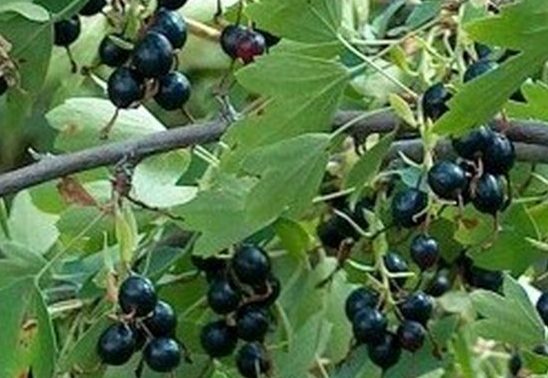
So how to care for currants so that it doesn’t take much time and still get enviable yields? This task is not only quite realistic, but quite easily achievable. To do this, three mandatory conditions must be met:
- Buy good, productive and disease resistant currant bush.
- Select for him suitable place and plant it correctly.
- Caring for currants is not only diligent, but also competently.
Choose a currant variety responsibly
Choosing and purchasing a good, promising variety is a very important condition! I would even say that it is the most important of these three conditions. Now new varieties of black and red currants, resistant to most diseases and very productive, have appeared, from which up to 7 and even up to 10 kg are harvested. berries from one bush.
Instead, you can go to the market, succumb to the persuasion of a kind grandmother and buy some old variety at a reasonable price. Take care of this seedling for several years, treat it, spray it, and as a result, pick a liter or two of small berries from it. And this is not an exaggeration; when buying seedlings from all sorts of dubious personalities, the result most often happens exactly like this.
Choosing a place to plant currants
Currants in general are an unpretentious plant, but if you plant them in deep shade or in a low, marshy place, then no matter how much you care for them, you still won’t achieve a good result. The best option would be to plant in a well-ventilated and well-lit place, but here you also need to take into account the region of residence. For southern regions, planting currants in partial shade will be preferable.
Landing scheme. Unfortunately, most often we have nothing to choose from. All the good places in the garden have long been occupied by other crops, and currants are usually planted along the fence. When planting this way, you need to step back at least one meter from the fence and make the distance between the bushes at least a meter, or even better, two meters.
Currants do not tolerate thickening well; with the bush planting method, the distance between plants should be left one and a half to two meters, then the plants not only develop well, but also live longer.
If you only have a narrow strip of land for planting, then it is better to use the trellis growing method. Then the seedlings can be planted much more often, after 70 - 80 cm. Form the bush so that the branches are in the same plane and tie them to wire or wooden trellises.
It is more pleasant and easier to care for currants on a trellis, and if you also make nice trellises, then such plantings will also become a decoration for the area.
Landing rules
When to plant. The best time to plant currants is early to mid-October. Plants planted at this time have time to take root before frost and actively begin to grow in the spring. Spring planting is somewhat worse, seedlings planted in the fall are already starting to grow and their root system is already more developed, but spring planting seedlings need time to take root and develop the root system.
Planting pit. A hole 40x40x40 cm is prepared for planting. The top layer is mixed with mineral and organic fertilizers. It is this mixture that is used to fill the hole when planting.5-10 kg of humus, 100-200 g of superphosphate and 30-40 g of potassium fertilizers are added to each hole. The poorer the soil, the higher the rate of fertilizer application.
Planting currants. Seedlings are buried 5-10 cm above the root collar. When planted shallowly, currant bushes may not produce root shoots at all, but will develop shoots from buds located above the soil level. As a result, the bush will quickly age and yields will be low.
The holes are watered abundantly - up to 10 liters. After this, the seedling is pruned, leaving 2-3 buds above the surface, which promotes the rapid growth of young shoots. The planting hole is mulched to better retain moisture.
And one more “trick”: any variety gives a higher yield and will become noticeably larger-fruited when planted next to several varieties - for mutual cross-pollination. Although almost all modern varieties are capable of self-pollination to one degree or another, nevertheless, with cross-pollination, the number of ovaries increases and the size of the berries of even small-fruited currants increases noticeably.
Now we can draw some conclusions. In order to obtain decent currant harvests in the future. you need to purchase a good, productive variety. Do not plant seedlings in deep shade or wetlands. When planting, add a well-fertilized soil mixture into the planting hole and plant the bush 5 - 10 cm deeper than it grew before.
How to care for young currant bushes
The main task of the first year of growing season is to try to grow as powerful a bush as possible with abundant basal shoots. This is why seedlings are planted deep and after planting the shoots are pruned into two or three buds.
Flowering and fruiting greatly weaken the young plant, so in the first summer it is necessary to cut off all the flowers if they appear. Fruiting is allowed only from the second year.
Feeding young bushes. Everywhere they write that the first few years a young seedling does not require feeding. I would venture to give a slightly different recommendation: for the first 2-3 years, feed the young plants with a solution of nitroammophoska (1 matchbox per 10 liters of water for 1 plant). This promotes rapid growth of shoots and the formation of a tall, powerful bush.
Pruning young bushes. An adult currant bush should consist of 15 - 20 branches, always of different ages. To achieve this, every spring you should leave 2 - 3 of the most powerful, young (zero) shoots, and remove the rest. It is desirable that the left shoots grow in different directions.
Thus, after 6 - 7 years you will receive a bush with the required number of shoots. After this period, you will need to start cutting out the old branches.
When caring for currants, pruning bushes is the most confusing and difficult task for many gardeners, so the rules for pruning currants need to be considered in more detail.
There are significant differences in pruning red and black currants. You can read how to prune red currants here: Caring for red currants
Currant pruning
To properly prune currants, you need to understand the principle by which this plant is pruned.
When is the best time to prune?
Currants can be pruned either in late autumn, after leaf fall, or in early spring, before buds open.By and large, currants don’t care when you prune, as long as it’s done during the dormant period.
It is more advisable for the gardener to do this in the fall. There is always more time in the fall, and even if for some reason you do not have time to prune in the fall, you will always have a week or another left to do this in the spring.
But if you do not have time to do the pruning in time in the spring and have to prune it after the sap flow begins, then this will no longer be sanitary pruning, but injury to the plants.
How to trim
Proper pruning is one of the most important components of good currant care. It ensures good development of bushes, prevents their thickening, the development of diseases and pests, thereby creating opportunities for the growth of young shoots and the formation of stable yields.
Try to keep the base of the bush as wide as possible, then its middle will be more illuminated - this promotes better ripening of berries, ripening of shoots and reduces the risk of powdery mildew infection. Therefore, the shoots that appear in the middle of the bush must be cut out.
Sick and pest-infested branches must be removed and burned. Also, do not leave weak or improperly growing shoots on the plant.
Every spring, leave 2 - 3 well-developed zero shoots; accordingly, the same number of old branches must be removed. Zero shoots grow from the ground, do not confuse them with tops - young shoots extending vertically from the base of an older branch. They look very strong, but their yield is much lower than that of zero branches, and they age faster.
When pruning, you should strive to cause the growth of zero shoots and form new branches from them. The thickening of the bushes should not be allowed.Do pruning annually. Cut out old branches and leave zero shoots to replace them.
If the bush is dense, remove some of the tops and cut out the oldest branches (even fruit-bearing ones) to stimulate the growth of the remaining zero shoots.
If you find it difficult to determine the age of the branches to be removed, look at their condition. Cut out branches that do not have annual shoots. If a top or a two-year-old branch from last year’s top extends from the base of such a branch, then make the cut close to them. Cut out all branches that grow less than 15 cm.
Good results are also obtained by cutting branches located at an angle to the soil surface of at least 45 degrees. This pruning noticeably enhances the growth of annual shoots, which produce the main harvest next year, and makes the bush erect, without unnecessary branching.
Currant pruning video:
How to care for currants in spring
Caring for currants in the spring should begin before the buds open. If you didn’t prune in the fall, do it in late March - early April.
Spring processing of currants with boiling water. Also, before the buds open, pour boiling water over the bushes. This is an old folk remedy, an excellent preventive measure against powdery mildew and a number of other diseases and pests of currants and gooseberries. Boil a bucket of water, pour it into a watering can and arrange a hot shower for the currants. Pour a bucket of boiling water onto an adult bush, water it on the branches and in the center of the bush.
Don’t be afraid to harm the plants, this method has been tested many times, I had to pour boiling water on bushes on which the buds had already blossomed and the young leaves were not harmed at all.
Watch an interesting video of how currants are treated with boiling water in the spring:
Processing the tree trunk circle. In the spring, loosen the slightly dried soil with a rake and cover it with humus or compost; when you start mowing the lawn or fighting weeds, cover the soil in the currant row with chopped grass. Pour it with a urea solution (1 tablespoon per 10 liters of water) to replenish the nitrogen that the grass consumes when rotting.
Spring treatment for pests. Before and after flowering, it is necessary to spray the plants against aphids. for this you can use all kinds of herbal infusions, biological products or stronger “chemistry”, it is at your discretion. Just do not spray during flowering, this will scare away or even poison the bees. Many gardeners specifically douse currant bushes with sweet or honey water to attract pollinating bees. This technique significantly increases the yield.
How to feed currants in spring. In spring, currants are fed with nitrogen fertilizers. Per 1 m², add 8-10 grams of urea or 10-15 grams of ammonium nitrate. Instead, you can water the plants with mullein diluted 1:10.
During flowering, if there is a threat of spring frosts, cover the currants with covering material, otherwise you may be left without a harvest.
It must be said that the most care for currants is in the spring; in the summer, plants require much less care.
How to care for currants in summer.
Summer care of currants consists of watering, removing weeds, loosening the soil, mulching, fertilizing and pinching shoots.
How to water. Currants are a moisture-loving crop and respond to watering with good yields. The critical period in moisture consumption is the beginning of the formation and growth of berries. Drying out the soil at this time can lead to their crushing or even shedding.It is necessary to water only at the root (in dry weather - once every 8-10 days, 5-6 buckets of water for each plant), without moistening the bush itself, as this can cause the development of powdery mildew.
Loosening and mulching. After watering, it is necessary to loosen the soil in the tree trunk circles so that air can better flow to the roots, but loosen it very carefully. The biological feature of currants is the superficial root system. The suction roots are slightly covered with soil.
When caring for currants, do not pick up a shovel. And work more delicately with your hoe. And best of all, don’t disturb the roots at all. Protect them with a 6-8 cm layer of mulch. Weeds cannot break through a thick layer of mulch, moisture is retained under it for a long time, there is no need for loosening, and rotting grass becomes fertilizer.
If you actively use mulching, caring for currants will be much easier. As mulch, use anything that rots quickly: grass, straw, leaves, weeds or seed husks. True, there is a fly in the ointment here; slugs like to live under the mulch...
Summer feeding. After harvesting, 70-100 g of phosphorus and 30-50 g of potassium fertilizers or 100-300 g of complex mineral fertilizers are applied to the currant bushes. Humus and compost are applied once every three years at the rate of 10 kg. on the bush.
It is very useful in the summer to feed the plants with a urea solution (dissolve 3 matchboxes in a bucket of water and water 1 bush with this volume from a watering can on top)
Feeding currants video:
Pinching shoots. If the bushes are not thickened, at the end - mid-July you can pinch the tops of the zero shoots. As a result, by autumn they form branches with flower buds.The branches formed after this summer pinching begin to bear fruit already on two-year-old wood. Timely summer pinching enlarges the berries.
Caring for currants in autumn
Autumn care for currants is, first of all, preparing the plants for the upcoming winter.
How to water. In autumn, currants are not watered as abundantly as in summer, just make sure that the soil is moist all the time. A lack of water in the autumn can have a bad effect on wintering.
How to feed. In the fall, when digging under each plant, add superphosphate (100-120 g) and potassium chloride (30-40 g).
Preparing for winter. In late autumn, when the top layer of soil freezes a little, the currant bushes need to be tied with twine, and during the winter they should be hilled in such a way that the entire plant is under the snow.
The blackcurrant bush bears fruit well at 4-8 years of age. By the age of 10, its productivity decreases. Then it is better to replace the bushes.
And in order not to be left without currants, prepare replacements for old bushes in advance - in the fourth or fifth year of the first planting.
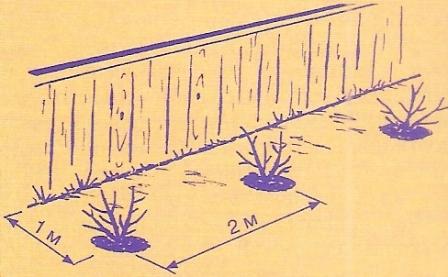
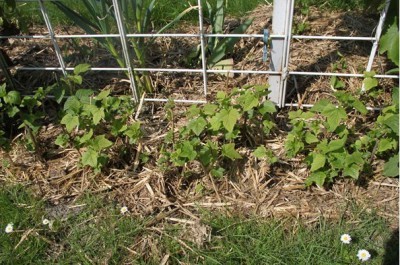
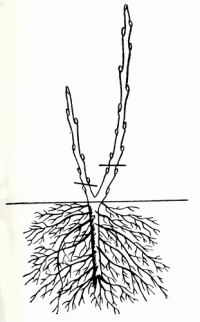
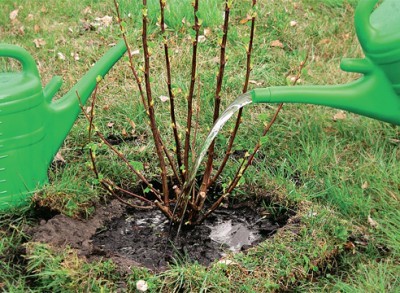
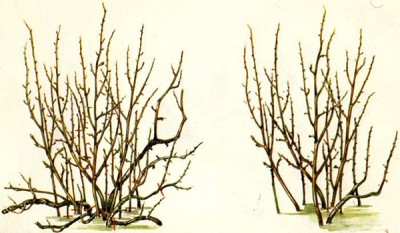

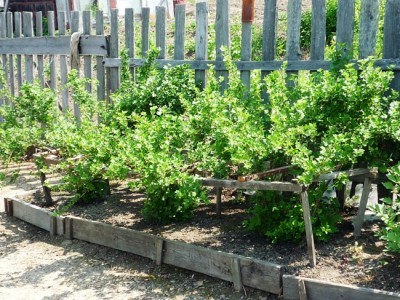
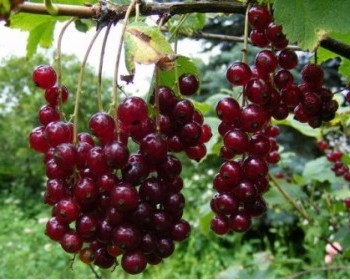

 (43 ratings, average: 4,63 out of 5)
(43 ratings, average: 4,63 out of 5) CUCUMBERS NEVER GET SICK, I'VE BEEN USING ONLY THIS FOR 40 YEARS! I SHARE A SECRET WITH YOU, CUCUMBERS ARE LIKE THE PICTURE!
CUCUMBERS NEVER GET SICK, I'VE BEEN USING ONLY THIS FOR 40 YEARS! I SHARE A SECRET WITH YOU, CUCUMBERS ARE LIKE THE PICTURE! You can dig a bucket of potatoes from each bush.Do you think these are fairy tales? Watch the video
You can dig a bucket of potatoes from each bush.Do you think these are fairy tales? Watch the video
 How our fellow gardeners work in Korea. There is a lot to learn and just fun to watch.
How our fellow gardeners work in Korea. There is a lot to learn and just fun to watch. Eye trainer. The author claims that with daily viewing, vision is restored. They don't charge money for views.
Eye trainer. The author claims that with daily viewing, vision is restored. They don't charge money for views. A 3-ingredient cake recipe in 30 minutes is better than Napoleon. Simple and very tasty.
A 3-ingredient cake recipe in 30 minutes is better than Napoleon. Simple and very tasty. Therapeutic exercises for cervical osteochondrosis. A complete set of exercises.
Therapeutic exercises for cervical osteochondrosis. A complete set of exercises. Which indoor plants match your zodiac sign?
Which indoor plants match your zodiac sign? What about them? Excursion to German dachas.
What about them? Excursion to German dachas.